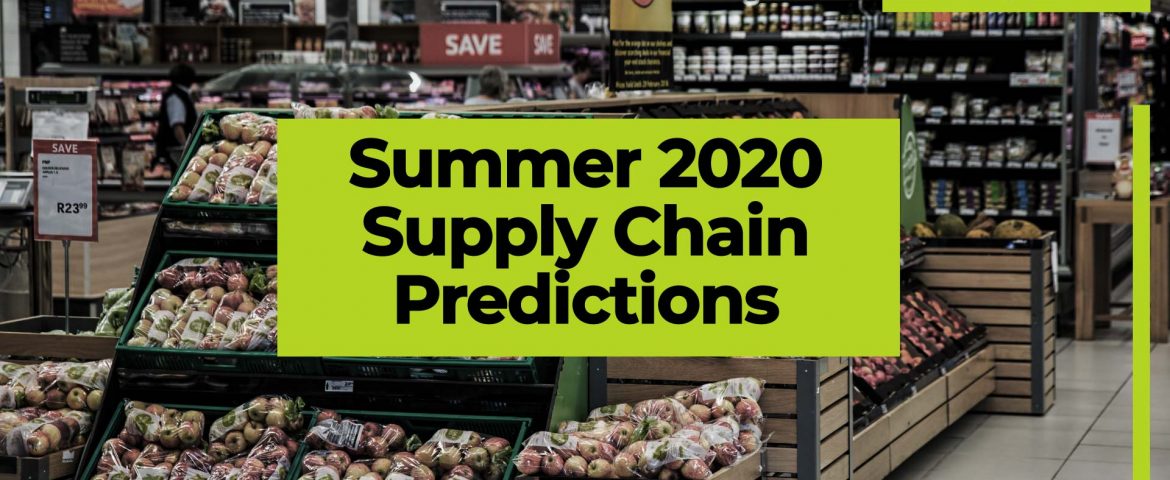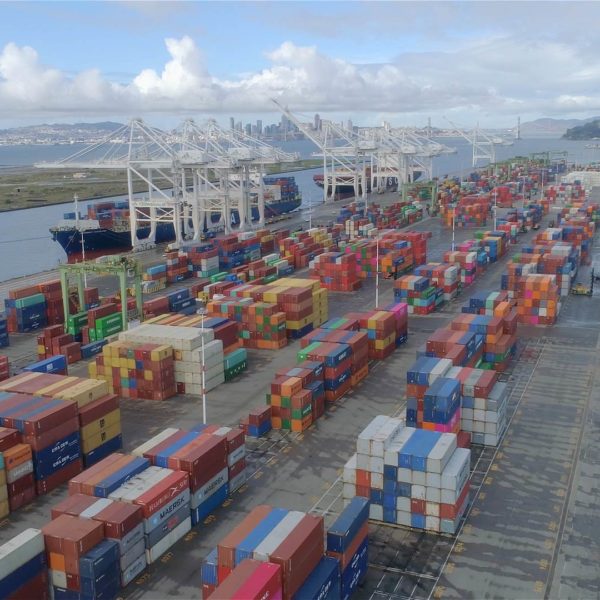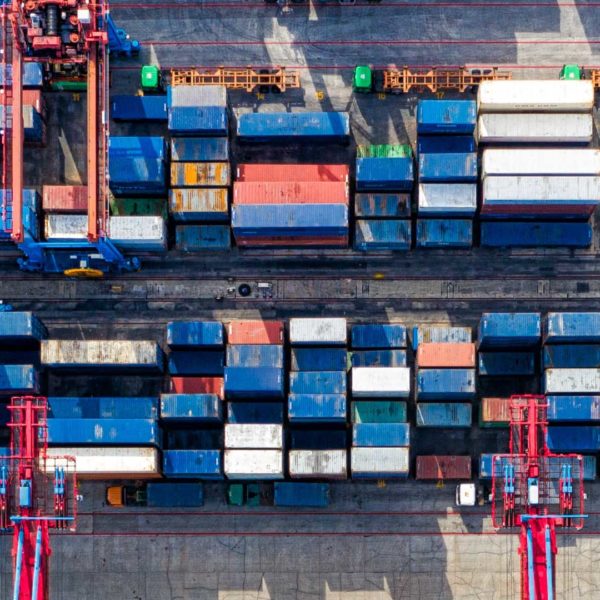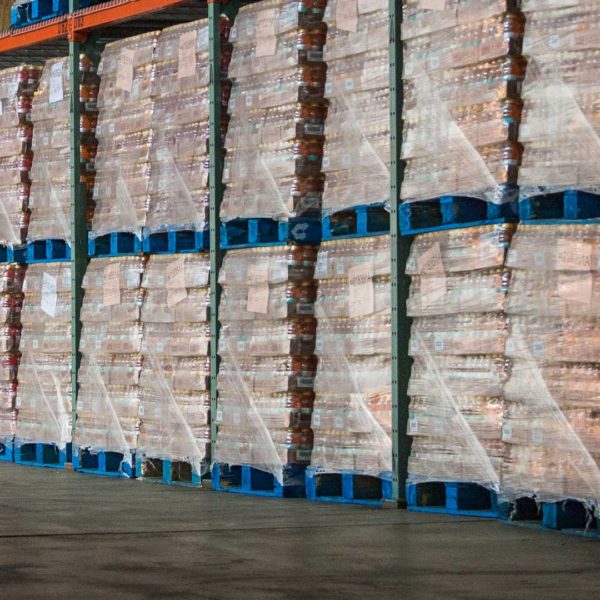Global supply chains have nearly all experienced sweeping disruptions from the COVID19 pandemic. Drastic drop in demand, factory and logistics shutdowns, raw material shortages, extreme demand on some items and near mandatory work from home are just some of the myriad of issues that companies have had to face this year.
As companies slowly start to open back up and some form of normality is slowly reclaimed, what are the big impacts on supply chains that will be felt throughout the summer of 2020.
Let’s take a look at a few supply chain and logistics trends we predict will happen this summer.
Carrier Capacity and Rates
Freight Volumes have declined substantially across many equipment types globally. With this drop in freight volumes comes increased rate pressure on carriers as there more trucks available than there are loads to move.
The economic restart that is predicted by some to start in Q3 could slowly start to push volumes higher than what they were in Q1 or likely will be in Q2. However it is unlikely these volumes will be as high as pre covid19 levels were. One unfortunate aspect to capacity predictions is the potential and very likely closure or bankruptcies of some motor carriers. This could cause a partial rebalance of capacity and rates as 2020 goes on.
Our prediction is carrier capacity across certain lanes and equipment types will start to tighten throughout the summer of 2020 as manufacturing resumes across many industries. Or put in another way, current April/May rates are likely the lowest we will see all year.
Produce and refrigerated freight have been oddities, in certain geographical locations, we have heard reports that capacity has become tight, however trends within grocery stores have shown that many people are choosing to purchase nonperishable items or meat instead of fresh fruit and vegetables.
One surprise has been the uptick in home improvement freight movements as more people are deciding to tackle projects around their homes during the pandemic.
Technology Adoption
Technology adoption has been pushed to the forefront for businesses as they scramble to prepare a work from home solution that allows a decent level of continued productivity. The logistics industry is no different, technology has helped to improve the fragmented industry and increased communication and visibility among the many players in a single supply chain.
With Covid19, technology has been leaned upon more heavily than ever as a way to track shipment delays, manage inventory levels for adjusted demand and find carrier capacity from a wider group of carriers than was previously able.
Many of the digital advances and offerings in the supply chain industry are becoming more permanent and more heavily utilized throughout the pandemic.
Our prediction is that all players within the industry will expect a higher level of technology adoption and visibility than before and will continue to utilize some of the tech offerings that have made their lives easier throughout this crisis.
INTERMODAL
Intermodal freight solutions combine first and last mile trucking moves, known as drayage, with long haul rail, which perfectly capitalizes off the inherent efficiencies of railways for the long haul portion of the shipment.
Intermodal is typically not as well known amongst shippers but is a cost saver on long haul lanes and capacity alternative to tight trucking markets.
Intermodal volumes have fallen just like nearly all other freight volumes throughout the COVID19 pandemic, and as with the other forms of transportation are somewhat cyclical and will likely start to rise again as imports and manufacturing starts to reopen.
As railroads have implemented PSR ( Precision scheduled railroading) intermodal service metrics have improved and become very reliable for freight that is not “rushed”. On time performance has increase substantially as has overall reliability. While there are fewer railroads than trucking companies, railroads are very healthy financially and will not suffer the same potential bankruptcies and closures that trucking companies are currently facing, which provides shippers a highly reliable and dependable form of long haul transportation.
We predict that intermodal will become an increasingly popular option for shippers as an alternative to long haul trucking particularly with the increase in service levels from railroads and the increased pressure on trucking carriers to meet emissions and hours of service regulations. Many shippers use intermodal on a percentage of specific long haul lane freight. As capacity likely tightens later this year, intermodal will also have an increased price advantage on routes longer than 500 miles.
IMPORTS AND EXPORTS
Imports and Exports have fallen along with domestics transportation . Initially this was caused by the rapid closure of many Chinese manufacturing facilities that provide sub assemblies, raw materials and finished products to US firms. As the COVID19 pandemic has burned on, factories are still disrupted but are slowly reopening in China, and the drop in imports is now largely driven by the drop in consumer demand principally among retailers.
Exports have also struggled as demand for products has dropped. One unique challenge that has plagued many US exporters is the lack of available ocean shipping containers. Since there are fewer imports, fewer ocean cargo ships are landing in the US and moving their full cargo containers inland to be unloaded. These containers once unloaded, are then loaded with US exports and shipping overseas. Since there are fewer imports, there are fewer available empty containers for firms needing to export products and materials domestically.
We predict imports and exports to have bottomed out by May/June or are nearly bottomed out and volumes to slowly rise from these lower levels throughout the later part of the year. How quickly volumes will rise will largely depend on the overall US economic health and the ability for the US population to spend discretionary income on goods. This overall economic picture is debated among top economists as to the overall outcome and timeline. The more bleak pictures point to a prolonged economic recession lasting well into 2021, while the more optimistic economists point to signals that the economy will bounce back pretty quick by the 3rd or 4th quarters of 2020. It is impossible to predict with much accuracy what the true outcome will be, however imports and exports will be closely linked to the greater economic picture.
OVERALL
2020 has thrown the world a curveball no one expected, and has pushed supply chain professionals to be quicker thinking, leaner, and more resilient than any other time in recent history. For the companies that are able to quickly adapt, maintain healthy business volume and utilize the latest in technology offerings they will likely emerge from this pandemic stronger than ever and more prepared to take advantage of a fully healthy economy than their competitors.
Further Reading Links
https://time.com/5832151/us-trade-coronavirus/
Zmodal provides comprehensive supply chain solutions that are data based and focus on optimizing your supply chain logistics plan for better reliability and efficiency. We focus on a multimodal approach to building resiliency that is backed by a first class team that provides 24/7 support and the technology to keep your supply chain connected and visible. If you want to talk or want a completely free initial consultation, give us a shout!




Comment